#Urban Greens
Explore tagged Tumblr posts
Text
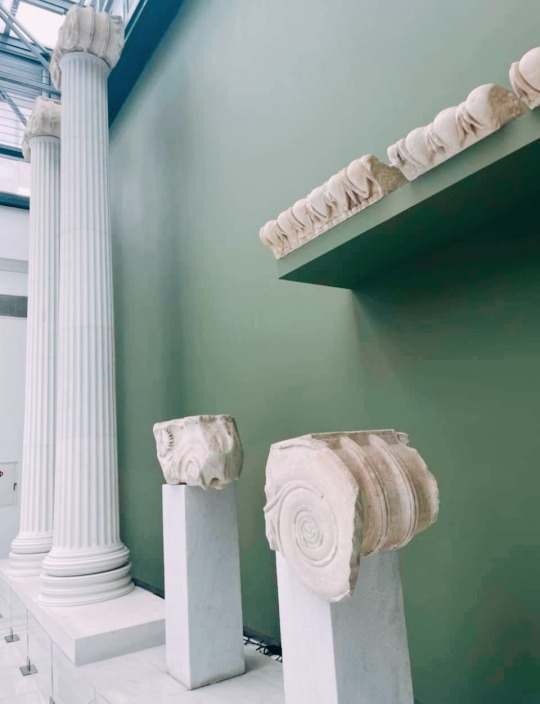



#the dark academia graduate#athens#greece#urban greens#urban photography#urbanity#modernism#green moodboard#green#green shades#shades of green#architecture#neoclassical#bronze#bronze statue#centaur#marble#urban academia#urban life#urban landscape#dark academia#dark academia aesthetic#urban exploration#urban
15 notes
·
View notes
Text
"With “green corridors” that mimic the natural forest, the Colombian city is driving down temperatures — and could become five degrees cooler over the next few decades.
In the face of a rapidly heating planet, the City of Eternal Spring — nicknamed so thanks to its year-round temperate climate — has found a way to keep its cool.
Previously, Medellín had undergone years of rapid urban expansion, which led to a severe urban heat island effect — raising temperatures in the city to significantly higher than in the surrounding suburban and rural areas. Roads and other concrete infrastructure absorb and maintain the sun’s heat for much longer than green infrastructure.
“Medellín grew at the expense of green spaces and vegetation,” says Pilar Vargas, a forest engineer working for City Hall. “We built and built and built. There wasn’t a lot of thought about the impact on the climate. It became obvious that had to change.”
Efforts began in 2016 under Medellín’s then mayor, Federico Gutiérrez (who, after completing one term in 2019, was re-elected at the end of 2023). The city launched a new approach to its urban development — one that focused on people and plants.
The $16.3 million initiative led to the creation of 30 Green Corridors along the city’s roads and waterways, improving or producing more than 70 hectares of green space, which includes 20 kilometers of shaded routes with cycle lanes and pedestrian paths.
These plant and tree-filled spaces — which connect all sorts of green areas such as the curb strips, squares, parks, vertical gardens, sidewalks, and even some of the seven hills that surround the city — produce fresh, cooling air in the face of urban heat. The corridors are also designed to mimic a natural forest with levels of low, medium and high plants, including native and tropical plants, bamboo grasses and palm trees.
Heat-trapping infrastructure like metro stations and bridges has also been greened as part of the project and government buildings have been adorned with green roofs and vertical gardens to beat the heat. The first of those was installed at Medellín’s City Hall, where nearly 100,000 plants and 12 species span the 1,810 square meter surface.
“It’s like urban acupuncture,” says Paula Zapata, advisor for Medellín at C40 Cities, a global network of about 100 of the world’s leading mayors. “The city is making these small interventions that together act to make a big impact.”
At the launch of the project, 120,000 individual plants and 12,500 trees were added to roads and parks across the city. By 2021, the figure had reached 2.5 million plants and 880,000 trees. Each has been carefully chosen to maximize their impact.
“The technical team thought a lot about the species used. They selected endemic ones that have a functional use,” explains Zapata.
The 72 species of plants and trees selected provide food for wildlife, help biodiversity to spread and fight air pollution. A study, for example, identified Mangifera indica as the best among six plant species found in Medellín at absorbing PM2.5 pollution — particulate matter that can cause asthma, bronchitis and heart disease — and surviving in polluted areas due to its “biochemical and biological mechanisms.”
And the urban planting continues to this day.
The groundwork is carried out by 150 citizen-gardeners like Pineda, who come from disadvantaged and minority backgrounds, with the support of 15 specialized forest engineers. Pineda is now the leader of a team of seven other gardeners who attend to corridors all across the city, shifting depending on the current priorities...
“I’m completely in favor of the corridors,” says [Victoria Perez, another citizen-gardener], who grew up in a poor suburb in the city of 2.5 million people. “It really improves the quality of life here.”
Wilmar Jesus, a 48-year-old Afro-Colombian farmer on his first day of the job, is pleased about the project’s possibilities for his own future. “I want to learn more and become better,” he says. “This gives me the opportunity to advance myself.”
The project’s wider impacts are like a breath of fresh air. Medellín’s temperatures fell by 2°C in the first three years of the program, and officials expect a further decrease of 4 to 5C over the next few decades, even taking into account climate change. In turn, City Hall says this will minimize the need for energy-intensive air conditioning...
In addition, the project has had a significant impact on air pollution. Between 2016 and 2019, the level of PM2.5 fell significantly, and in turn the city’s morbidity rate from acute respiratory infections decreased from 159.8 to 95.3 per 1,000 people [Note: That means the city's rate of people getting sick with lung/throat/respiratory infections.]
There’s also been a 34.6 percent rise in cycling in the city, likely due to the new bike paths built for the project, and biodiversity studies show that wildlife is coming back — one sample of five Green Corridors identified 30 different species of butterfly.
Other cities are already taking note. Bogotá and Barranquilla have adopted similar plans, among other Colombian cities, and last year São Paulo, Brazil, the largest city in South America, began expanding its corridors after launching them in 2022.
“For sure, Green Corridors could work in many other places,” says Zapata."
-via Reasons to Be Cheerful, March 4, 2024
#colombia#brazil#urban#urban landscape#urban planning#cities#civil engineering#green architecture#green spaces#urban heat#urban heat island effect#weather#meteorology#global warming#climate change#climate hope#climate optimism#climate emergency#climate action#environment#environmental news#city architecture#bicycling#native plants#biodiversity#good news#hope#solarpunk#ecopunk#hopepunk
18K notes
·
View notes
Photo

Favela and Cityscape by Bruno Barbey
#favela#brazil#brown#urban#blue#bruno barbey#contrast#green#20th century#social commentary#cityscape#photography
999 notes
·
View notes
Text
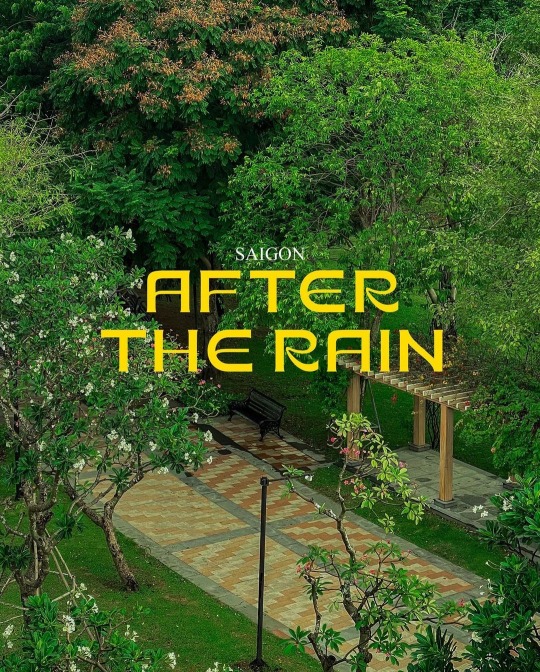
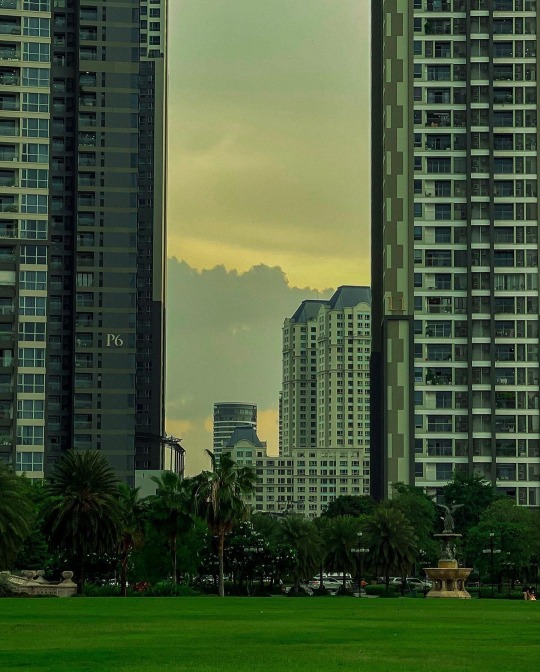
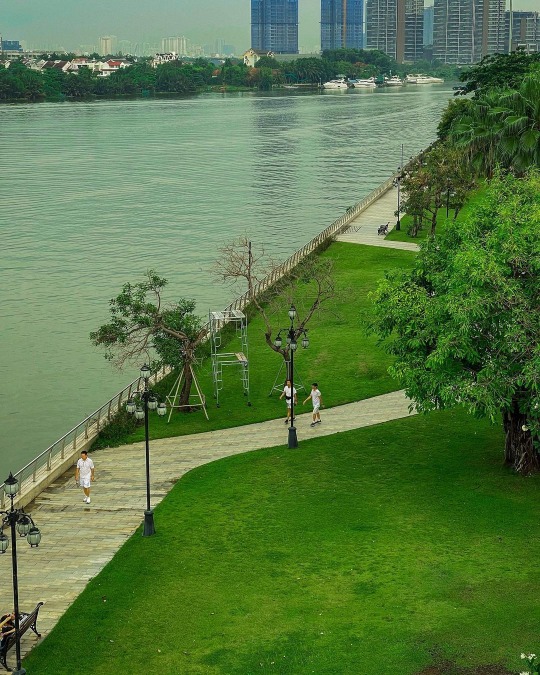

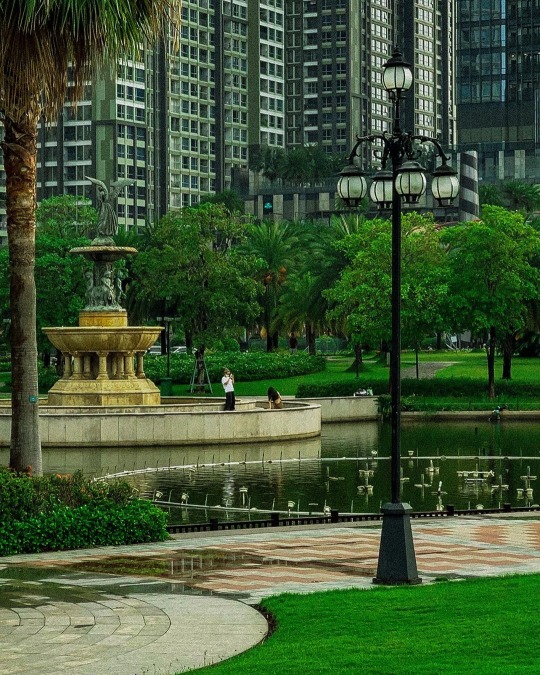
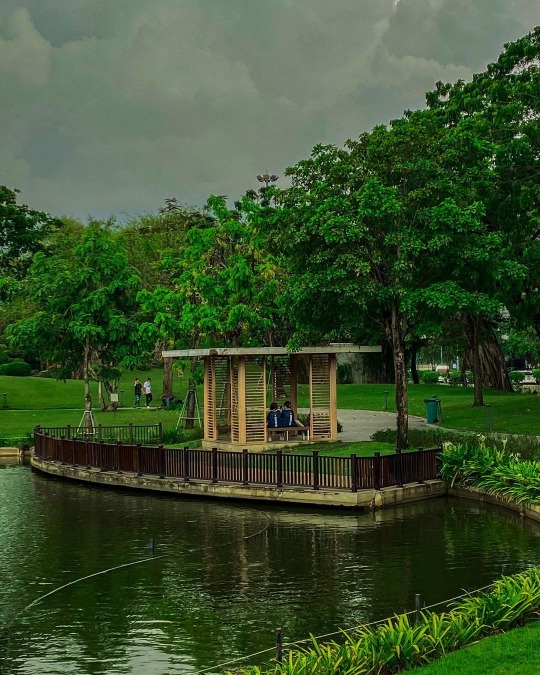
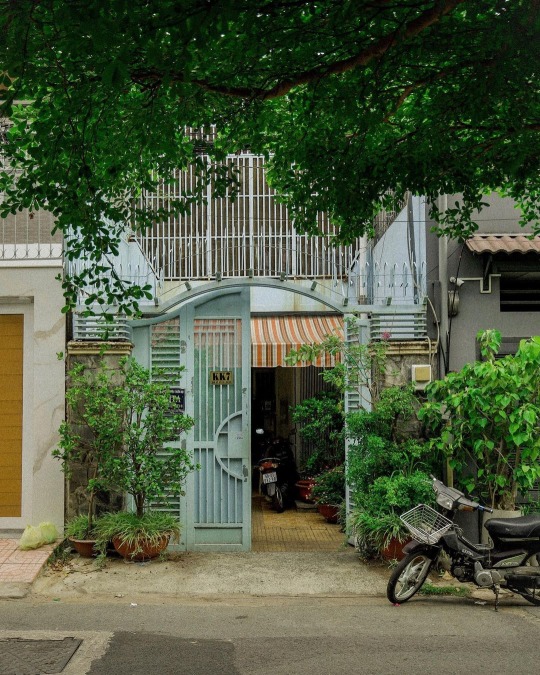
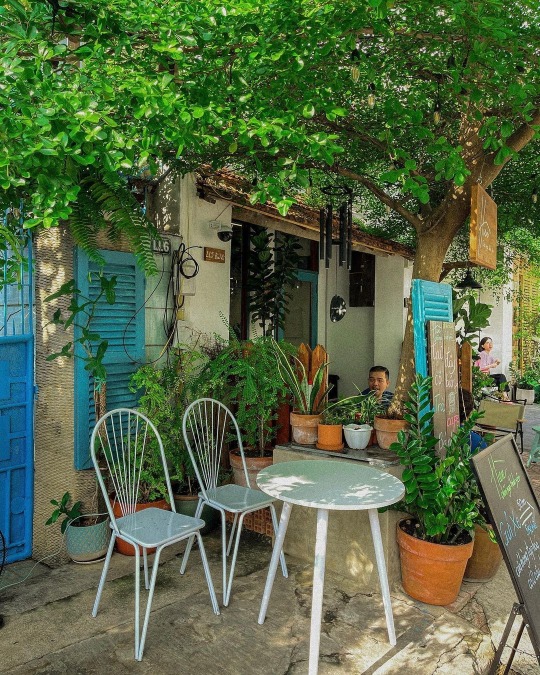


Saigon, Vietnam. Credit to laphanblog (Instagram).
#vietnam#vietnamese#culture#travel destinations#travel#saigon#ho chi minh#ho chi minh city#cafe#after the rain#green#greenery#urbanscape#urban landscape#urban photography#urban nature#urban life
13K notes
·
View notes
Text
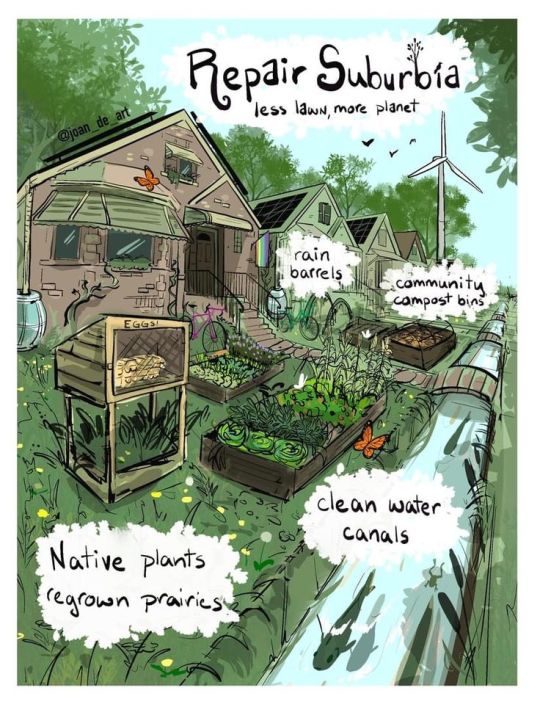
Little vision for a more beautiful, sustainable, tactile future.
3K notes
·
View notes
Text
Types Of Witchcraft
Note: These are general/basic explanations of different classes of magick/witchcraft. Practitioners can fall into multiple or none of these categories. Ultimately, only an individual can choose their labels.

Green: Utilizing greenery/plants/herbs/flowers in herbal/nature magick, such as creating blends of different plants or primarily using herbs in spellwork. May keep a garden and take great pride in their workings/connection to the earth and nature.
Hedge/Shamanic: A type of magick that's more oriented towards spirit work, Otherworld and astral travel, dream work, spiritual power and healing. May work with psychedelic/psychotropic/toxic plants and fungi as spiritual tools (ie: flying ointments/teas made from amanita muscaria or datura)
Sea: A type of magick derived from materials/abstract ideas involving the ocean world. Sea magick is worked using various items from as well as one's own connection to the sea and its creatures.
Storm: Magick that is worked by combining one's own energy with the energy of the weather, most commonly storms. Storm witches may have practices such as collecting storm water or snow, "whistling up" or manipulating winds, or performing rituals during severe weather.
Hearth/Kitchen: Magick performed through kitchen craft and/or mundane tasks/crafts around the home or for loved ones. Typically worked daily through food, herbal mixtures, crafting, decorating, and hobbies. May also work with the Fae/elements/nature.
Tea: Those who drink tea, make their own tea mixtures, or enjoy blending herbal remedies and often use reading tea leaves as their form of divination.
Urban: For those who live in or prefer an urban setting/lifestyle. Magick that is worked in densely populated areas and big cities, without some of the seemingly "traditional" aspects of witchcraft.
Tech: Magick that is skillfully worked through technology. A tech witch might cast spells/do divinatory readings on the internet, use magick based apps/programs, or keep a digital grimoire/library.
Elemental: Magick that is worked by honoring/acknowledging all 4/5 elements (Fire, Air, Water, Earth, and/or Spirit). Elementalists may dedicate part of their alter to each element and call upon them during rituals/spells. Conversely, they may choose to focus on only one element changing the designation to either fire, air, water or earth witchcraft.
Fae/Faerie: The magick of those who work and commune with the Fae. Faerie witches may do rituals/spells around the Fae, ask favors of them, have regular communication sessions, and leave them offerings. The Fae are very unpredictable and strong but, with time and respect, they share their magick with special individuals.
Infernal: A system of spirit work/magick that revolves around Infernal spirits/entities, such as demons, djinn, or other spirits of a chaotic alignment. This practice requires a surprising amount of shadow work and dismantling of oppressive religious systems. They may summon demons, perform rituals/spells with them, make deals, or take them up as magickal familiars.
Necromancy: The practice of seeking the assistance of, summoning, communication, and diving through the dead. Practitioners may frequent cemetaries/burial grounds/haunted locations and perform magick and spiritual/divinatory readings there. Often employ the use of pendulums, dowsing rods, talking boards, black mirrors, grave dirt, and bones.
Draconian: Draconian magick is a practice that involves engaging with dragons as powerful forces and allies in spiritual practice. It can include rituals, symbolism, and techniques to connect with dragons, and may be used for empowerment, healing, and spiritual growth.
Chaos: A type of magick utilizing new, non-traditional, and unorthodox methods. It is a highly individualistic practice that draws from many magickal disciplines (eclecticism).
Blood/Sanguine: A very potent class of magick that includes the use of one's own blood or that of another in powerful rituals/spells.
Sigil/Art: The use of sigils, symbols, glyphs, runes, or artwork infused with will and intention. This practice is vast, versatile, and diverse with each practioner producing truly unique results.
Lunar: Lunar magick is the practice of performing rituals during the different phases of the Moon to bring about physical or psychological change. They may honor/worship the Moon, do moonlight rituals, or make moon waters. Conversely, one could work with the Sun in much the same fashion.
Cosmic/Celestial: Magick that incorporates the stars and planets. Astrology is a dominant force in their lives and witchcraft and they consider the placement of celestial bodies before doing a working.
Crystal: Incorporation of crystals/stones in one's magickal practice. May make crystal grids, include them in their spells, use them in energy work, meditation, or for Reiki healing.
Glamour: Glamour magick is an enchantment type that adjusts or changes your outward appearance, or people's perception of your outward appearance and can include the enchanting of jewelry, clothing, and even makeup for magickal purposes.
Shadow: Magick with a focus on the elements of darkness and shadow. May practice umbrakinesis (shadow manipulation), magickal subterfuge and illusion, and feel at peace, and even practice, in pitch black darkness
Are there any you feel I should have included? Please let me know! I'd love to expand this list. :)

#magick#witch#lefthandpath#dark#witchcraft#eclectic witch#eclectic pagan#tech witch#urban witch#Draconian#fae#faerie#demons#demon work#Necromancy#cosmic#divination#elemental#green witch#hedge witch#sea witch#hearth witch#kitchen witch#storm magic#storm witch#lunar witch#sigil witch#chaos witch#chaos magick#witchblr
431 notes
·
View notes
Text


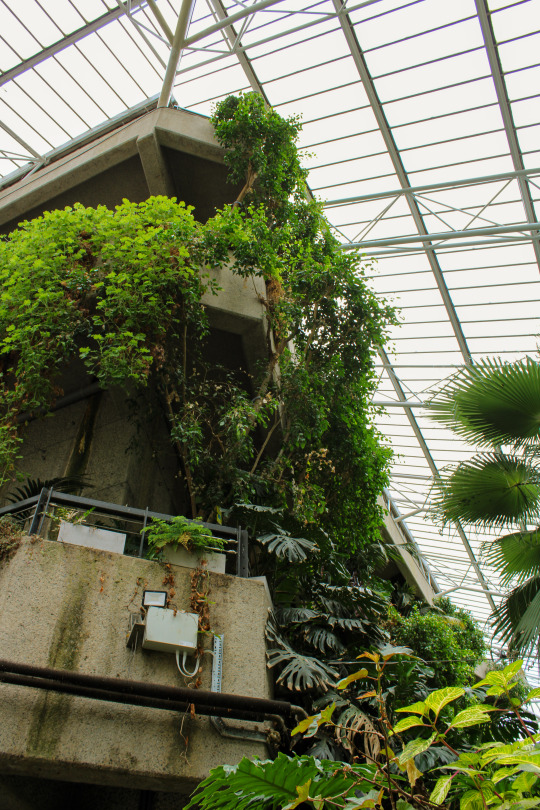
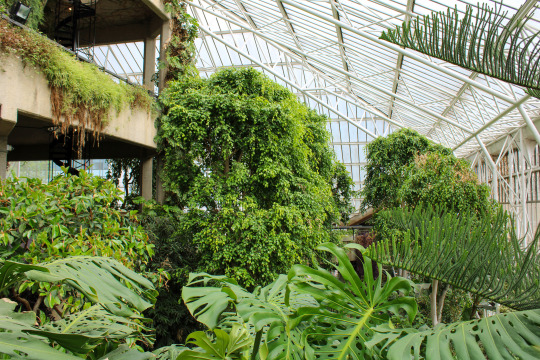
Barbican Conservatory Pt. 1 Taken 31st May 2023, Barbican Conservatory, London
#plantcore#botany#botanical#plantlife#plants#naturephotography#botanic academia#green academia#solarpunk#brutalism#indoor jungle#greenery#verdant#city garden#urban jungle#naturecore#naturelover#tree photography
4K notes
·
View notes
Text

#China#Forest City#Liuzhou#urban planning#green architecture#air pollution#climate change#sustainability#environment#innovation
365 notes
·
View notes
Text
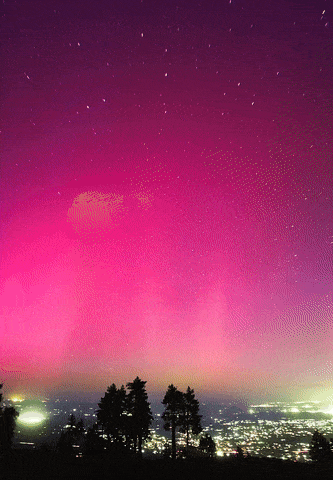
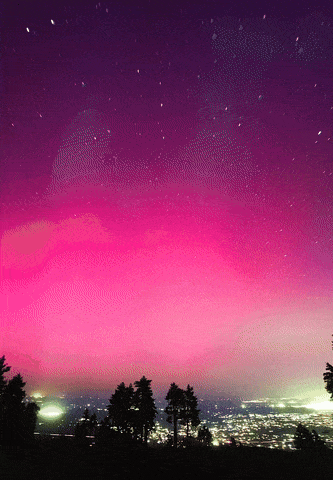
socal northern lights | patrickc_la on ig
#stim#northern lights#nature#skies#sfw#purple#pink#green#yellow#red#black#stars#trees#night skies#timelapse#color shifting#cars#urban#cities#southern california#ishy gifs#postish
403 notes
·
View notes
Text

#mine#photography#aesthetic#nostalgia#grunge#american gothic#indie#urban#2000s#digicam#cabin#overgrown#abandoned#apocalypse#zombie#whimsical#green#brown#marjitea
212 notes
·
View notes
Text
As relentless rains pounded LA, the city’s “sponge” infrastructure helped gather 8.6 billion gallons of water—enough to sustain over 100,000 households for a year.
Earlier this month, the future fell on Los Angeles. A long band of moisture in the sky, known as an atmospheric river, dumped 9 inches of rain on the city over three days—over half of what the city typically gets in a year. It’s the kind of extreme rainfall that’ll get ever more extreme as the planet warms.
The city’s water managers, though, were ready and waiting. Like other urban areas around the world, in recent years LA has been transforming into a “sponge city,” replacing impermeable surfaces, like concrete, with permeable ones, like dirt and plants. It has also built out “spreading grounds,” where water accumulates and soaks into the earth.
With traditional dams and all that newfangled spongy infrastructure, between February 4 and 7 the metropolis captured 8.6 billion gallons of stormwater, enough to provide water to 106,000 households for a year. For the rainy season in total, LA has accumulated 14.7 billion gallons.
Long reliant on snowmelt and river water piped in from afar, LA is on a quest to produce as much water as it can locally. “There's going to be a lot more rain and a lot less snow, which is going to alter the way we capture snowmelt and the aqueduct water,” says Art Castro, manager of watershed management at the Los Angeles Department of Water and Power. “Dams and spreading grounds are the workhorses of local stormwater capture for either flood protection or water supply.”
Centuries of urban-planning dogma dictates using gutters, sewers, and other infrastructure to funnel rainwater out of a metropolis as quickly as possible to prevent flooding. Given the increasingly catastrophic urban flooding seen around the world, though, that clearly isn’t working anymore, so now planners are finding clever ways to capture stormwater, treating it as an asset instead of a liability. “The problem of urban hydrology is caused by a thousand small cuts,” says Michael Kiparsky, director of the Wheeler Water Institute at UC Berkeley. “No one driveway or roof in and of itself causes massive alteration of the hydrologic cycle. But combine millions of them in one area and it does. Maybe we can solve that problem with a thousand Band-Aids.”
Or in this case, sponges. The trick to making a city more absorbent is to add more gardens and other green spaces that allow water to percolate into underlying aquifers—porous subterranean materials that can hold water—which a city can then draw from in times of need. Engineers are also greening up medians and roadside areas to soak up the water that’d normally rush off streets, into sewers, and eventually out to sea...
To exploit all that free water falling from the sky, the LADWP has carved out big patches of brown in the concrete jungle. Stormwater is piped into these spreading grounds and accumulates in dirt basins. That allows it to slowly soak into the underlying aquifer, which acts as a sort of natural underground tank that can hold 28 billion gallons of water.
During a storm, the city is also gathering water in dams, some of which it diverts into the spreading grounds. “After the storm comes by, and it's a bright sunny day, you’ll still see water being released into a channel and diverted into the spreading grounds,” says Castro. That way, water moves from a reservoir where it’s exposed to sunlight and evaporation, into an aquifer where it’s banked safely underground.
On a smaller scale, LADWP has been experimenting with turning parks into mini spreading grounds, diverting stormwater there to soak into subterranean cisterns or chambers. It’s also deploying green spaces along roadways, which have the additional benefit of mitigating flooding in a neighborhood: The less concrete and the more dirt and plants, the more the built environment can soak up stormwater like the actual environment naturally does.
As an added benefit, deploying more of these green spaces, along with urban gardens, improves the mental health of residents. Plants here also “sweat,” cooling the area and beating back the urban heat island effect—the tendency for concrete to absorb solar energy and slowly release it at night. By reducing summer temperatures, you improve the physical health of residents. “The more trees, the more shade, the less heat island effect,” says Castro. “Sometimes when it’s 90 degrees in the middle of summer, it could get up to 110 underneath a bus stop.”
LA’s far from alone in going spongy. Pittsburgh is also deploying more rain gardens, and where they absolutely must have a hard surface—sidewalks, parking lots, etc.—they’re using special concrete bricks that allow water to seep through. And a growing number of municipalities are scrutinizing properties and charging owners fees if they have excessive impermeable surfaces like pavement, thus incentivizing the switch to permeable surfaces like plots of native plants or urban gardens for producing more food locally.
So the old way of stormwater management isn’t just increasingly dangerous and ineffective as the planet warms and storms get more intense—it stands in the way of a more beautiful, less sweltering, more sustainable urban landscape. LA, of all places, is showing the world there’s a better way.
-via Wired, February 19, 2024
#california#los angeles#water#rainfall#extreme weather#rain#atmospheric science#meteorology#infrastructure#green infrastructure#climate change#climate action#climate resilient#climate emergency#urban#urban landscape#flooding#flood warning#natural disasters#environmental news#climate news#good news#hope#solarpunk#hopepunk#ecopunk#sustainability#urban planning#city planning#urbanism
14K notes
·
View notes
Text
Good News - May 15-21
Like these weekly compilations? Support me on Ko-fi! Also, if you tip me on Ko-fi, at the end of the month I'll send you a link to all of the articles I found but didn't use each week - almost double the content!
1. Translocation of 2,000 rhinos in Africa gets underway in “one of the most audacious conservation efforts of modern times”
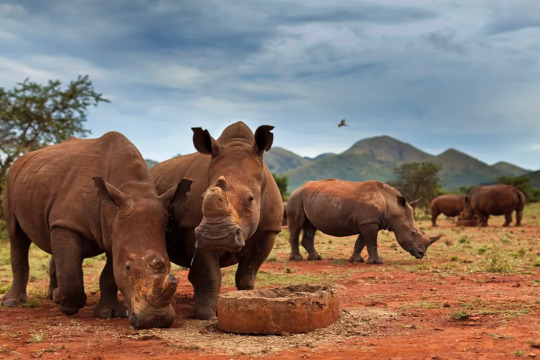
“The 2,000 rhinos - more than are currently found in any single wild location in Africa - represent around 12-15% of the continent’s remaining white rhino population. […] “Rhinos perform an important ecological function in the environment as a large grazing herbivore,” says Dale Wepener[….] “The protection of rhino is far more than just looking after rhino; other species that occur in the protected areas will benefit from the protection,” explains Jooste. “This will lead to an increase in diversity and result in much healthier ecosystems.”
2. Florida Corridor Buffers Effects of Climate Change on Wildlife — And People
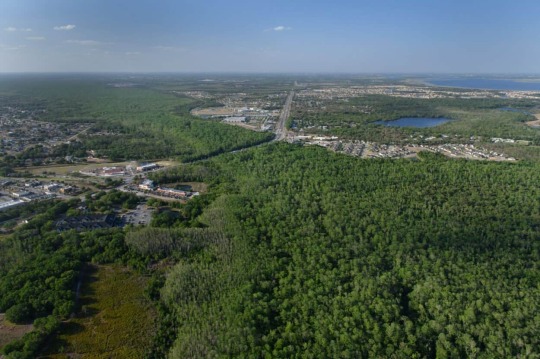
“A massive multi-partner effort that has conserved 10 million acres for wildlife in Florida over past decades will help buffer wildlife—and people—from the effects of climate change, a new report says. […] Protecting these corridors is important for wildlife genetics, demography and connectivity […], conducting prescribed fires in the corridor can reduce the risk of more intense wildfires [… and] they can provide buffers against hurricanes and seasonal thunderstorms.”
3. Global life expectancy to increase by nearly 5 years by 2050 despite geopolitical, metabolic, and environmental threats
“Increases are expected to be largest in countries where life expectancy is lower, contributing to a convergence of increased life expectancy across geographies. The trend is largely driven by public health measures that have prevented and improved survival rates from cardiovascular diseases, COVID-19, and a range of communicable, maternal, neonatal, and nutritional diseases (CMNNs).”
4. Valencia has Spain’s longest urban park
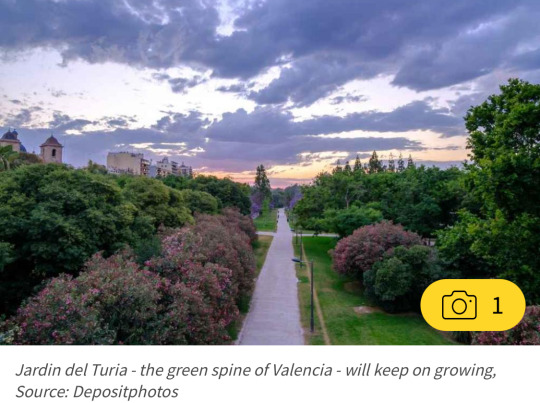
“Jardin del Turia (Turia Garden) is the green spine of the City of Valencia and Spain’s (and possibly Europe’s) longest urban park stretching for a length of 8.5 kilometres [… and] the current administration plans to make Jardin del Turia Europe’s largest city green space by extending it to the sea[….] Almost all Valencia residents (97 per cent) live within 300 metres of an urban green space. […] Jardin del Turia is a true urban oasis that provides exceptional thermal comfort, with a temperature difference of up to three degrees compared to other areas of the city.”
5. This Paint Could Clean Both Itself and the Air
“When an artificial ultraviolet light source shines on [photocatalytic] paint, the nanoparticles react with pollutants to make them break down—theoretically removing them from the nearby air and preventing a discoloring buildup. [… R]esearchers developed a new photocatalytic paint that they claim works using UV rays from ordinary sunlight, making its self-cleaning properties easier to activate. They’ve also shown that they can effectively produce this paint from recycled materials [including fallen leaves].”
6. Planting Seedlings for a Cooler Rockingham
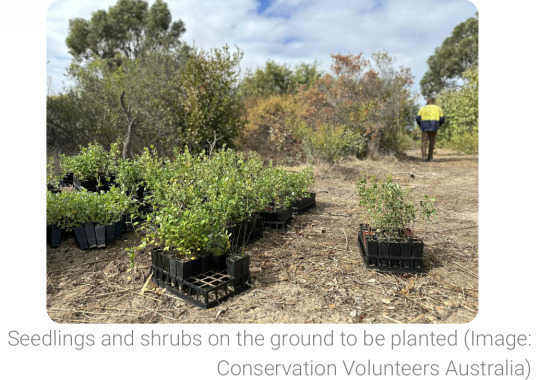
“A dedicated group of volunteers recently planted over a thousand native seedlings in Lewington Reserve [… and] re-established canopy cover to areas of the reserve to create cooling shade for the local community and provide homes for native wildlife. […] Planting lots of trees and shrubs in urban areas can help create shade and cool cities, mitigating the impacts of climate change, contributing to biodiversity conservation and building greener, more resilient communities.”
7. Sydney’s first dedicated affordable housing for trans women designed to deliver ‘positive outcomes’
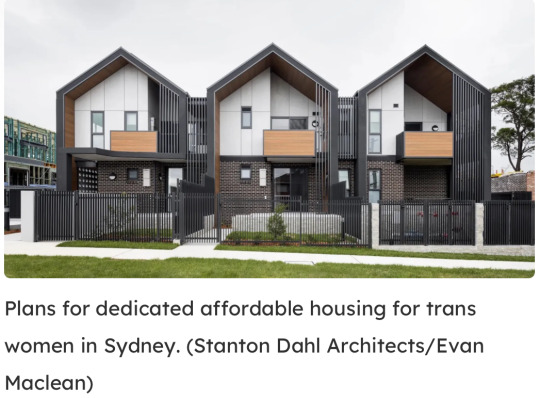
“Community housing provider and charity Common Equity NSW, […] which is for people on very low to moderate incomes, prides itself on creating inclusive living and promotes the independence and well-being of people and communities […, and] will deliver the first-of-its-kind social housing in a bid to provide a safe place to live for transgender women seeking an affordable home.”
8. Rewilding: How a herd of bison reintroduced to Romania is helping ‘supercharge’ carbon removal
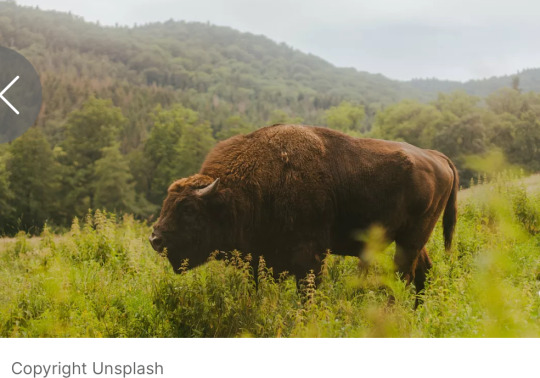
“170 European Bison reintroduced to Romania’s Țarcu mountains could help capture and store the carbon released by up to 84,000 average US petrol cars each year. […] By grazing a 48 square kilometre area of grassland in a wider landscape of 300 kilometres squared, they helped to capture an additional 54,000 tonnes of carbon each year. That is around 10 times the amount that would be captured by the ecosystem without the bison.”
9. World’s biggest grids could be powered by renewables, with little or no storage

“[…] 100% renewable supply can then match the load by putting surplus electricity into two kinds of distributed storage worth that [an energy expert] says are worth buying anyway – ice-storage air-conditioning and smart bidirectional charging of electric cars, and recover that energy when needed, filling the last gaps with unobtrusively flexible demand.”
10. Supporting the Long-Term Survival of Copper River Salmon and Alaska Native Traditions
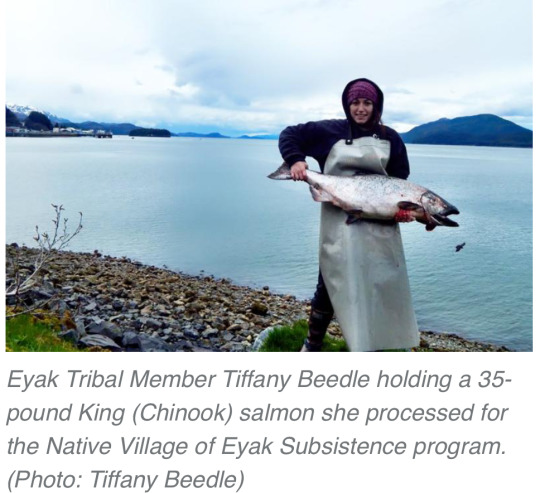
“With $4.3 million in NOAA funds, the Copper River Watershed Project and The Eyak Corporation will remove fish passage barriers, opening more streams for salmon spawning and subsistence fishing. [… As part of this effort, o]ld narrow culverts that constrict water flow will be replaced with “stream simulation” culverts wide enough to fit the full stream, including its banks. They are also deep to allow contractors to place stones and other material inside to mimic a natural stream bottom.”
May 8-14 news here | (all credit for images and written material can be found at the source linked; I don’t claim credit for anything but curating.)
#hopepunk#good news#rhino#white rhino#africa#conservation#rewilding#climate change#florida#wildlife#life expectancy#health#spain#green space#urban parks#recycling#trees#global warming#trans#affordable housing#australia#bison#romania#carbon#carbon capture#renewableenergy#reforestation#salmon#alaska native#nature
390 notes
·
View notes
Text

#curators on tumblr#li_destinations#streetscape#street photography#urban photography#hotel#green wall#photography
562 notes
·
View notes
Text


You've got the 'questionable nature magic that smells like necromancy and probably is folks', and the 'magical found family squads who solve life and falls in love.'
On a completely unrelated note, I wish it was Autumn already.
#noahs book recs#queer books#body horror#necromancy#urban fantasy#witches#autumn reads#dark academia#found family#lgbtqia books#books to read#jack of thorns#green fuse burning#silver in the wood#malium discordiae#a botanical daughter#summer sons#spellbound#a market of dreams and destiny#a rival most vial#a marvellous light#phantom and rook#letters to half moon street
221 notes
·
View notes
Text









MAKING A DOOR LESS OPEN
◼️|◼️|◼️
◼️|◼️|◼️
◼️|◼️|◼️
#talos stimboards#stimboard#stim#album stimboard#car seat headrest#csh#making a door less open#night stim#night#dark#voidcore#hands free#trees#leaves#city#urban#street signs#streetlights#black#green#shadows#gif ids#id in alt
285 notes
·
View notes




